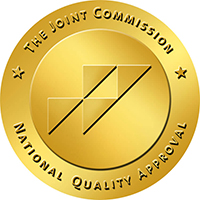Adolescent Mood and Resilience

What are Mood Disorders?
Adolescence is one of the most difficult stages of development for teenagers and their families. As teenagers develop from infancy to maturity - they go through a lot of emotional, hormonal, intellectual, physical, and social changes. When they are subjected to additional stress, it is easy for them to become overwhelmed and develop mental health issues. Teenagers' mood problems, in particular, can lead to life-threatening situations.
A mood disorder is a type of mental illness that affects the emotional state of a person. Significant emotional disturbances characterize these disorders (severe lows called depression or highs called hypomania or mania). It's natural for someone's mood to shift depending on the situation. Symptoms of a mood disorder, on the other hand, must be present for several weeks or more before they can be identified.
Mood problems can alter your behavior and impair your capacity to cope with everyday tasks such as work or school. Mood issues in children and adolescents are regularly referred to a psychiatric consultation. Longitudinal studies show that mood disorders begin in childhood, with the majority of initial episodes occurring before adulthood.
Mood disorders are broadly categorized as bipolar disorders and depressive disorders.
- Depression (Major or Clinical Depression) - Depression is a prevalent kind of mental illness. Grief or sadness is a common reaction to a painful life event or crisis such as the death of a spouse or family member, the loss of a job, or the diagnosis of a serious illness.
If, on the other hand, depression persists long after stressful circumstances have passed or when no apparent cause can be found, physicians would classify the depression as clinical or serious depression - symptoms must continue for at least two weeks for a person to be diagnosed with clinical depression. - Bipolar Disorder (Manic-Depressive Disorder) - Bipolar disorder is characterized by mood fluctuations that range from sadness to mania. When someone is in a bad mood, the symptoms might be similar to those of clinical depression.
Manic episodes or mania alternate with depressive episodes. A person experiencing a manic episode may feel euphoric, irritable, may have inappropriate energy, or heightened levels of activity.

What Causes Mood Disorders?
It is unknown what causes mood disorders in teenagers. Certain substances in the brain cause positive emotions. Neurotransmitters (brain chemicals that govern mood) are controlled by other substances in the brain.
A chemical imbalance in the brain can induce mood problems. Serotonin is a neurotransmitter that plays a key role in mood disorders and is reduced during depressive episodes. The chemical serotonin is most typically linked to depression while dopamine has also been linked to mood disorders with studies indicating that it is lower in depression and higher in mania. This is something that may happen on its own (due to genetic factors), or can occur in conjunction with environmental variables such as unforeseen life events or long-term stress.
Psychiatrists and neurologists have discovered a strong link between our screen time habits and mental disorders. While this isn't surprising, it takes time to establish appropriate limits, so that we don't become reliant on them for everything - whether for amusement or work/school.
Because everyone is different, the answer may change as you do. Like most routines, black and white thinking is ineffective. Finding the gray through mindfulness, on the other hand, can tune us in to identify and meet our needs better than any screen could ever do.
How Prevalent are Mood Disorders in Teens?
Mood disorders are common in children and adolescents with an estimated 15% having a mood disorder and 12% having a mood illness that causes significant impairment. Children and adolescents are particularly vulnerable to depression with rates as high as 18% to 22% in females and 7% to 10% in males by the age of 17. According to studies, the prevalence of disruptive mood dysregulation disorder in children ranges between 0.8 and 4.3 percent.
In 2019, more than one-third of high school students reported persistent feelings of sadness or hopelessness, a 40% increase since 2009. Poor mental health in adolescents can be quite life changing in difficult ways, affecting multiple aspects of their lives. Students with poor mental health may struggle in school, with grades, with social skills, making decisions, setting goals, participating in family life, and maintaining good health.

Symptoms of Intrusive Thoughts, Suicide Ideation and Avoidance:
For the first time in history, now more than ever before, teens fear adulting, intimacy (really being known), responsibility, bullying (especially cyberbullying), and they question their own safety, identity and welfare.
As such, mood disorders and anxiety disorders are increasing. While attention deficits have been the main area of psychological attention for many over the years, Solstice Pacific is looking at the deeper symptomatology. Adolescents are struggling with sleep, relationships and achievements, and this is chipping away at their self-worth and values attunement. Stress, anxiety and fear are leading to intrusive thoughts, suicide ideation and avoidance. This is because families are not equipped to adapt and adjust due to being constantly distracted and consumed with "busyness". Distraction has become an identifying habit rather than an occasional experience.
In other words, the ways teenagers distract themselves to numb or isolate emotionally (even physically) is interrupting brain development. Thus, there are less patterns that support neurological, mood, personality, cognitive, and behavioral resilience. Repair and neuromodulation do not occur when the brain is not rested and is literally experiencing a form of overheating. Immersive screen experiences put the individual in parasympathetic fight or flight, which means the Central Nervous System is prepared to release hormones to help us survive something exhaustive or all-consuming. That takes a toll when it is hour after hour, day after day… which is often the case with gaming, streaming, schoolwork, social media, and the other patterns that come with staying connected in a ubiquitous world.
Bullying or trauma can lead to individuals feeling like an injured party, then creating a schedule of non commitment with a low threshold requirement of follow through. Similarly, vulnerability is looking more like emojis, labels, virtue signaling and sexting rather than in-person listening, experiencing, accountability to values, and imagination. This pattern has infinite damage to the shape, makeup and communication from one brain lobe to the other because thoughts, emotions and behaviors have such an inextricably linked relationship.
In other words, if a 12 year old's behavior is passive aggressive, ambivalent, or outright aggressive, their emotions and thoughts bend similarly. And if their emotions and thoughts are passive, suicidal and empty, self harm and erratic or impulsive behavior may become the norm. Our habits train our brain and body, and our brain and body train our habits.
Treating adolescents requires experts who understand the science, what's at stake for their future and can creatively and curiously engage them to take small steps away from the fear state and into a place of courage, self-awareness and empathy for self and others.
How Can You Help a Teen With Mood Disorders?
A family member or guardian of an adolescent must be on high alert for warning signs and seek help as soon as possible - these adolescents require emotional support, and you must be their go-to person. Mood disorders can lead to isolation.
Depression symptoms can be exacerbated by a lack of engagement and connection. Obviously, you cannot push your child to make friends or socialize. However, showing support without being overbearing can help you gain your child's trust and allow them to talk about their difficulties and concerns as they arise - this will enable you to recognize potential warning indicators and respond appropriately.
What Does Ongoing Mood Disorder Treatment in Teens Look Like?
As soon as you and your teen arrive at Solstice Pacific, we will conduct a thorough examination. A comprehensive assessment is required to determine what type of mood disorder or combination of disorders the patient is suffering from - proper history taking and interviewing are vital in order to obtain an accurate diagnosis for them. Afterwards, we'll discuss which therapy options are best for them.
One of the components of treatment is education on the symptoms and probable causes of the condition. We'll also show you how to deal with the symptoms and teach you coping techniques, so you can learn to manage your emotions and triggers as they arise.
Mood disorders can often be treated. Treatment options include, but are not limited to the following:
- Medications. Medications can be quite beneficial, particularly in the event of severe or persistent depression. They can help patients with moderate depressive symptoms and, in the long term, reduce the chance of recurrence.
However, it's crucial to remember that medicines aren't suitable for every teen and shouldn't be utilized in every situation. During the early phases of treatment, the treatment team will scrutinize whether certain drugs can help reduce the severity of symptoms.
- Talk therapy (psychotherapy). Therapy is a method of assisting people in comprehending the nature of their depression and how to overcome it. It also identifies stresses in the teen's surroundings and instructs them on how to avoid these. The purpose of this type of treatment is to assist patients in dealing with low emotions, managing social connections, and improving problem-solving abilities.
Our therapists and counselors assist patients talk about their feelings and ideas and come up with solutions to deal with their depression symptoms through productive conversations.
- Family therapy. Teenagers require all of the help they can get especially from their family and loved ones. It is critical for the family to be actively involved in their child's healing. This may serve as an additional motivator for them to improve. If any potential causes of the teen's illness are discovered within the family, family therapy can be used to address them with the help of a professional.
- Cognitive Behavioral Therapy (CBT). When administered properly, cognitive behavior therapy (CBT) is effective in the acute treatment of depression and may be a viable alternative to antidepressant medicines for even the severe cases of depression.
For bipolar individuals, CBT might be used as a supplement to medication. CBT decreases relapse/recurrence rates to a degree that is equivalent to maintaining patients on medications which is especially remarkable in a chronic recurring disease.
References:
- Sekhon S, Gupta V. Mood Disorder. [Updated 2021 May 8]. In: StatPearls [Internet]. Treasure Island (FL): StatPearls Publishing; 2021 Jan-. Available from: https://www.ncbi.nlm.nih.gov/books/NBK558911/
- Driessen, E., & Hollon, S. D. (2010). Cognitive behavioral therapy for mood disorders: efficacy, moderators and mediators. The Psychiatric clinics of North America, 33(3), 537–555. https://doi.org/10.1016/j.psc.2010.04.005




